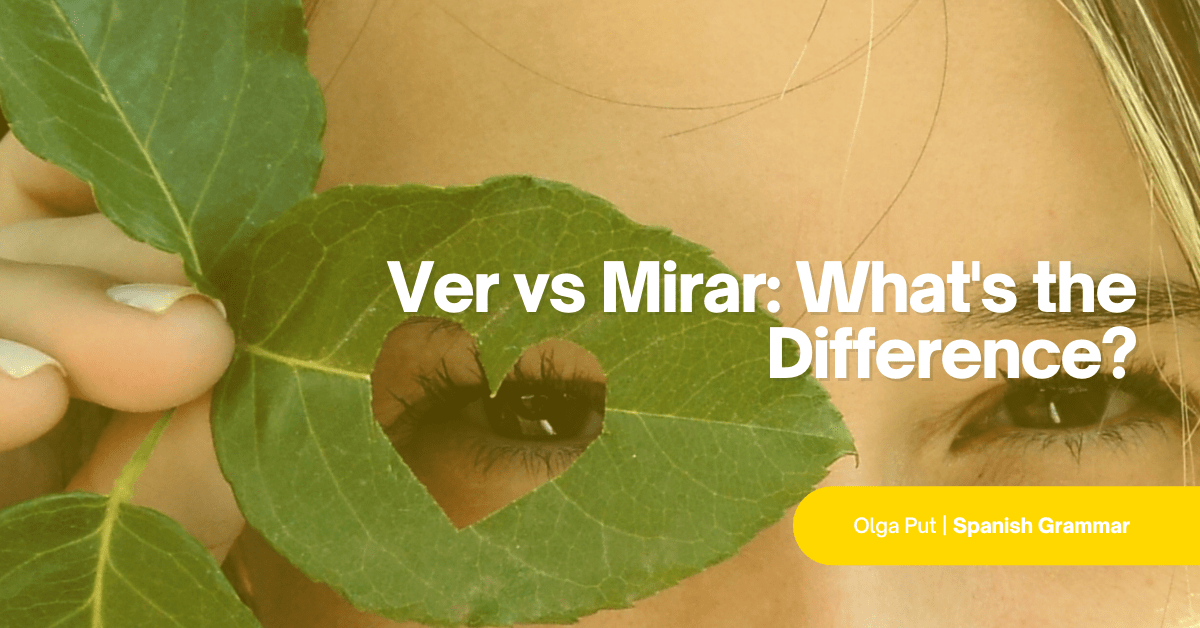
Estar Conjugation: Free Spanish Lesson, Exercises, and PDF
Estar is one of the most common verbs in the Spanish language. It’s one of the translations of the verb “to be” in English, so it’s actually really important to understand how the estar conjugation works in Spanish. If you have been studying Spanish for a while, you know that conjugations in this language can be quite a challenge. With three moods, six subjects, irregular verbs, and...Read More
Master the 18 Spanish Tenses (and Take Our Cheat Sheet With You)
What if I told you that the key to achieve your language learning goals resides in mastering the 18 Spanish tenses? I’m not exaggerating—if you master today’s post, you’ll master all Spanish conjugations and with that, most of your current mistakes when writing and speaking in the language will be gone. Keep reading to discover what the Spanish tenses are, how to...Read More
100 Sentences With the Spanish Verb Ser
As you begin your learning journey, the verb ser in Spanish is key to expressing ourselves. It’s fundamental to basic Spanish grammar. Read this blog post, to learn what the verb ser means in Spanish and how to use it. Access tons of examples so that you can master its use! Ready? Let’s begin! What Does the Verb Ser Mean? The verb ser in Spanish means “to be” in English....Read More
An Epic Grammar Guide to ‘Lo’ in Spanish: ¡Sí, Lo Puedes Aprender!
Who knew such a tiny word could cause such big confusions? Lo is a wacky word—and the moment you want to translate it from Spanish into English, it starts to get rough. What does lo mean? Here are some examples of its versatility in meaning: Lo quiero. (it)I want it. Lo vi. (him)I saw him. Lo difícil es comenzar. (the)The hard part is getting started. Lo siento. (no...Read More
10 Mistakes You’ll Hear Native Spanish Speakers Make in Spanish
Have you ever heard a Spanish native speaker say something that you thought was incorrect? You then ran to check if you had learned something wrong, but no. You, the Spanish learner, were right, and the native speaker was wrong! Stop the presses! Yeah, it happens in every language. In English, you’ll also hear people saying things like *”He don’t like...Read More
Ya Que vs Porque: What’s the Difference?
Have you been studying Spanish for some time and still don’t understand the difference between ya que and porque? Estudio Español ya que mi familia viene de México.Estudio español porque mi familia viene de México. You’re not alone. But you know what? It will take you about 15 minutes to end the confusion once and for all. In this blog post, I explain the similarities and...Read More
Saber Conjugation: Free Spanish Lesson, Exercises, and PDF
To know the meaning of Spanish verbs is an important part of the process of learning Spanish. Knowing how to conjugate these verbs is also essential. To know that the English verb “to know” means both saber and conocer in Spanish will prove useful in conversations. We use the verb “know” a lot in English without even noticing, and in Spanish it’s pretty much...Read More
Preterite vs Imperfect: A Beginner’s Guide to the Past Tense in Spanish
Ready for a blast from the past? As you may know, Spanish has two past tenses: preterite and imperfect. It’s often tricky to know which to use when, since they both refer to actions in the past. Fortunately, several general guidelines exist to help you realize when to use preterite vs imperfect. It’s also helpful to know which Spanish phrases trigger the use of either the...Read More
How to Use Accidental or Impersonal Se in Spanish Conversation
Imagine you’ve just broken your mom’s favorite flower vase. By accident, of course. What do you tell her? “Mom, I broke your flower vase.” But wouldn’t that somehow imply that you did it on purpose? Wouldn’t she be angry? Or would you say: “Mom, your flower vase got broken,” effectively removing yourself from the picture, shamelessly escaping all consequences....Read More
